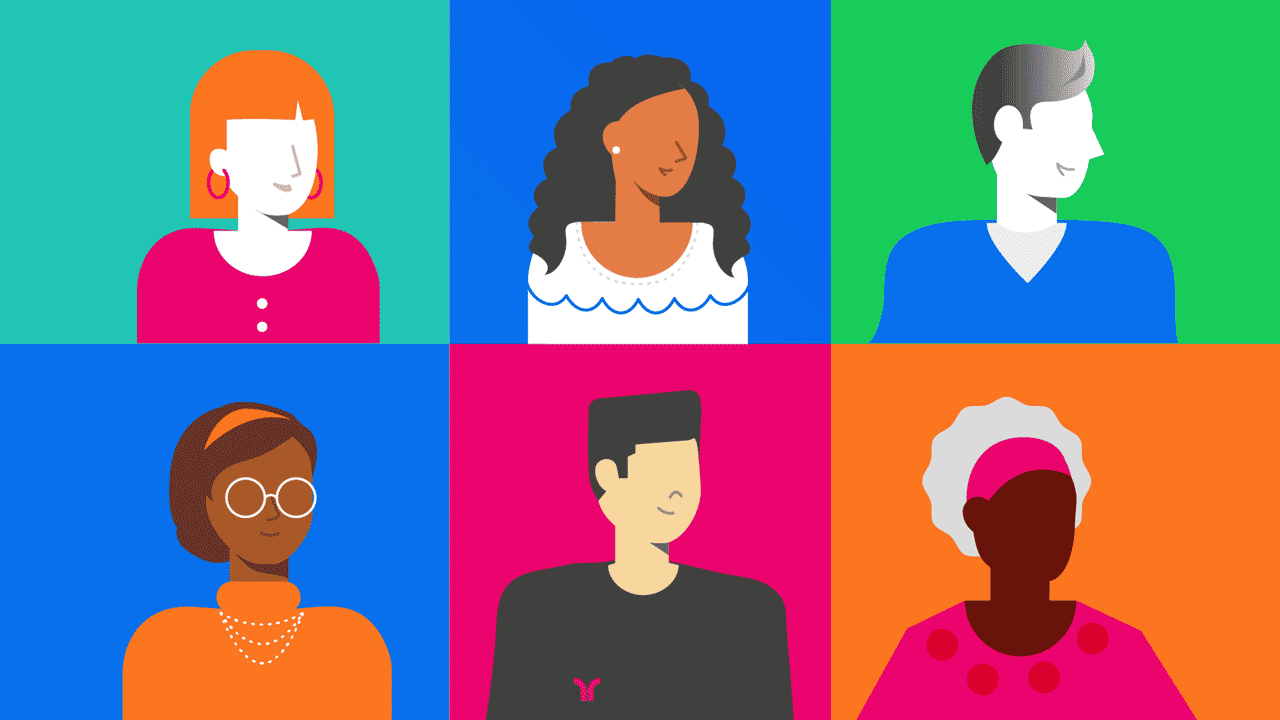In our last post, we talked about the importance of product inclusion and user research in the development of healthcare apps. Diverse perspectives are crucial for identifying user needs and enhancing the patient experience. For tech startup companies, assumptions can be made easily—everyone has fast internet access, the latest smartphones, and the most up to date desktop and notebook computers. However, when it comes to healthcare design, assumptions can negatively impact UX decisions and the inclusivity of research and design. We must pause and take time to question common misconceptions and biases for the benefit of all.
Misconceptions and Biases in Healthcare UX
“Digital is great for the patient experience”
Sometimes technology (or a beautifully designed app) isn’t exactly what patients want—or need. While technology has transformed healthcare delivery, digitizing certain processes doesn’t always enhance the patient experience. As one patient shared with us, “Not everyone wants to send everything to a bot. Apps are fantastic, I get a whole lot done… It would just be nice to get confirmation somehow.” This real-life feedback underscores the reality of needing to balance digital efficiency with the human touch in healthcare.
The journey towards creating an inclusive healthcare app requires us to constantly question our assumptions and embrace a growth mindset. Accepting that we don’t know everything is not just a humbling realization but an invitation to learn and grow…
This idea is especially true when it comes to sensitive or complex interactions like a serious health diagnosis. These types of experiences may be better served through traditional person-to-person channels, such as an in-person visit or phone call. Technology and the human touch must interact in a seamless way to improve patient outcomes while providing affordable, efficient healthcare.
“Everyone has the internet and good smartphones”
Not every patient has access to high-speed internet or the latest smartphone. According to Pew Research Center in 2021, 30% of adults say they often or sometimes experience problems connecting to the internet at home.
Many apps are designed specifically for people with access to the latest technology. In healthcare UX, we must consider how real-life limitiaitons can impact the overall experience. Discrepancies in internet speed, for example, could significantly affect app loading times and limit overall functionality.
“Older people don’t use technology” and other generalizations about populations
While young adults are most likely to be early adopters, many older adults are increasingly comfortable using technology, especially for devices that make their lives easier. In fact, a 2021 survey by Pew Research Center showed the smartphone ownership gap between those aged 18-29 and 65+ narrowed from 53% in 2012 to 35%. Internet use among the 65+ age group has also grown, reducing the gap from 56% in 2000 to 24%. This trend underscores the adaptability and willingness of older generations to embrace the digital age. We should consider rethinking these generalizations about older adults and their capabilities.
Barriers and Challenges in Healthcare UX
In addition to understanding our biases, we also need to address significant barriers and challenges that arise in healthcare UX.
One Size Does Not Fit All
In the healthcare context, a “one size fits all” approach is far from effective. As previously mentioned in our last blog post, centering designs around what we consider to be the average user can inadvertently lead to harm and exclusion, especially for those who would benefit the most from such solutions. Implementing inclusive features such as plain language, high-contrast color schemes, and visual aids aren’t just inclusive—these elements also enhance usability for all.
You Are Not Your User
A cornerstone of UX design is acknowledging that “you are not your user.” Designers and researchers must avoid making assumptions based on their own personal experiences. While we have all been patients or consumers of healthcare at some point, we must remember that our healthcare products will be used by patients with individual needs—they all have diverse backgrounds, different health issues, varying levels of education, and literacy.
These individuals will engage with our app in sometimes unexpected ways. As previously mentioned, preconceived biases can significantly reduce our apps’ inclusivity and effectiveness. By remembering that we are not our users, we embrace diversity and ensure our design decisions cater to the widest possible audience.
User Access and Privacy Concerns
In user experience research, a significant hurdle is obtaining direct access to users—patients and clinicians. User feedback and lived experiences are integral for shaping not only a usable but also a kind product. In the realm of healthcare UX, protecting patient privacy and their data is a significant consideration. The research process must maintain a strict confidentiality standard, which creates a delicate balancing act between obtaining user insights and ensuring privacy.
Overcoming Challenges the Tendo Way
Looking to Other Industries for Best Practices: Embracing Familiar Design Patterns
Turning to other industries for best practices can be a fruitful strategy. For example, familiar design patterns that have been embraced in other products can offer valuable insights. Consider how e-commerce has mastered intuitive interfaces, or how social media platforms effectively use notifications to engage users. By adopting familiar design patterns, we can build healthcare apps that feel intuitive and meet user expectations.
Partnering with Health Systems
Building partnerships with health systems is another crucial step in designing effective healthcare apps. Our foundational customers offer a wealth of insights into healthcare. Talking to our foundational customers also helps us identify the gaps in current processes and also pinpoint opportunities where our apps can provide the most value. By collaborating closely with these health systems, we can build solutions that are both useful and impactful to clinicians and patients alike.
Adopting a Growth Mindset: Embracing the Unknown
The journey towards creating an inclusive healthcare app requires us to constantly question our assumptions and embrace a growth mindset. Accepting that we don’t know everything is not just a humbling realization but an invitation to learn and grow. We understand the importance of iterating our designs based on feedback, challenging our perspectives, and being open to new ideas and approaches.
This mindset encourages us to learn from diverse sources—consulting with healthcare workers, social workers, and patient advocacy groups, and even taking cues from unrelated industries. A well-designed user experience can enhance patient care, as long as the research and designs reflect the diversity and complexity of patients that we are trying to serve.
At Tendo, we envision a future where:
- Patients experience streamlined processes, proactive support, and no frustration.
- Clinicians spend more time with patients and less time on screens.
- Caregivers play a crucial role in caring for their loved ones and receiving compassionate support.
- Healthcare systems improve access and equity and reduce complexity.
Together, we will bring this future to life. It's time to reimagine what's possible.
Want to read more?
So, stay tuned for the next post in the series, and be sure to subscribe to the blog to receive regular updates and insights from Tendo.



